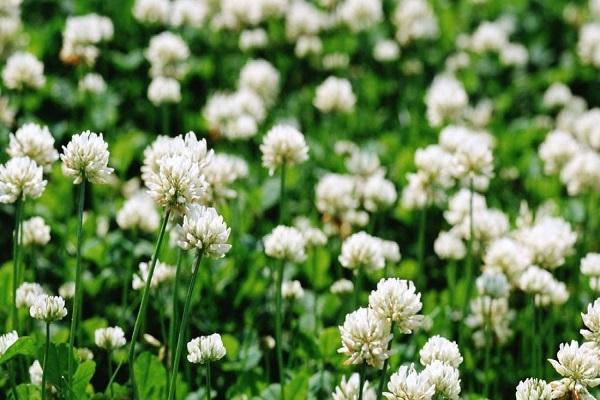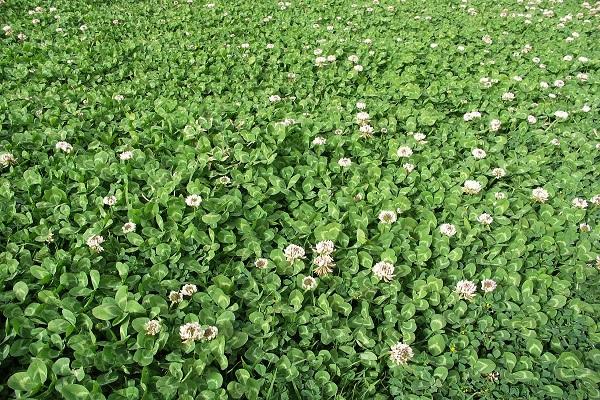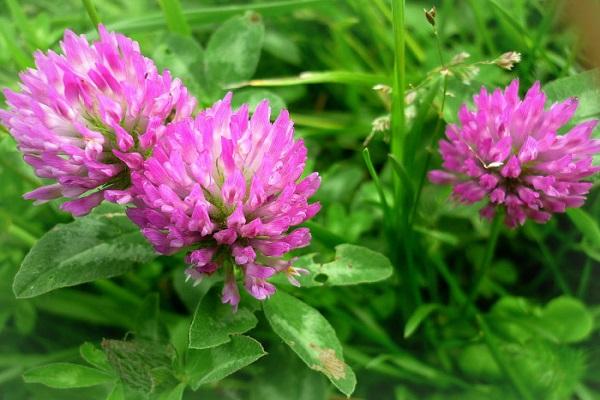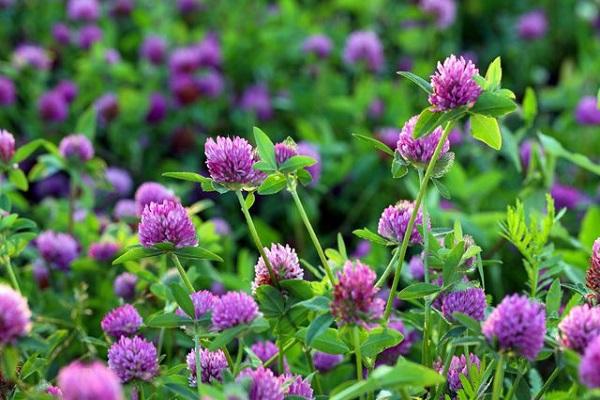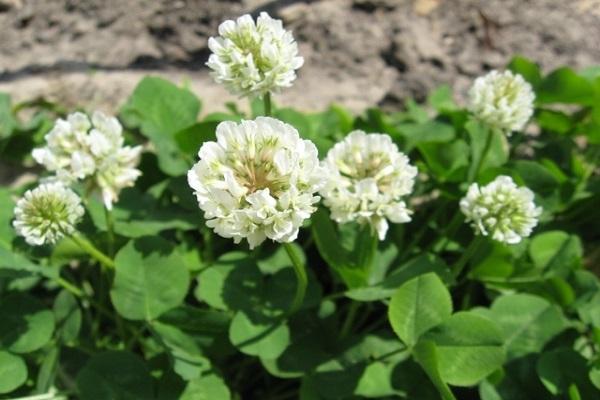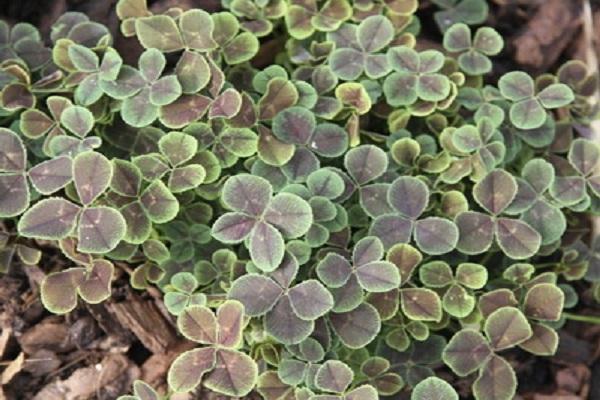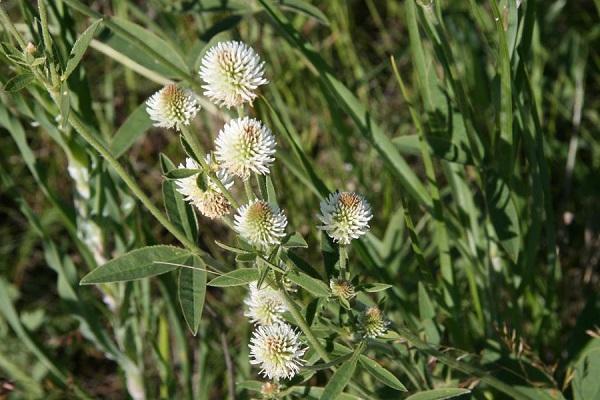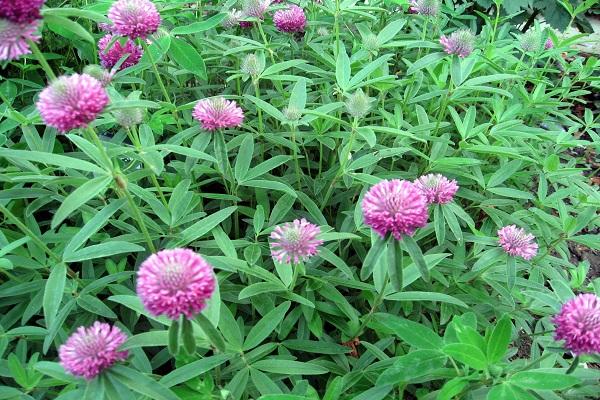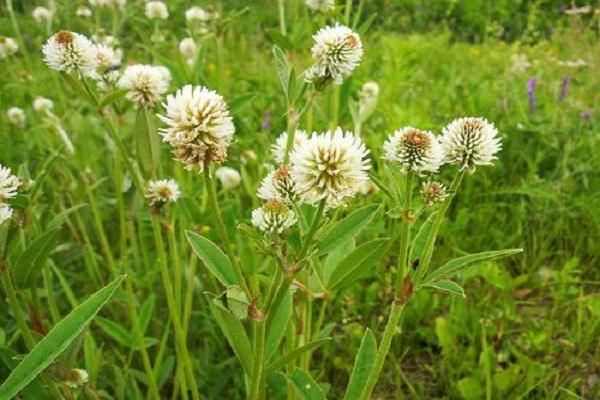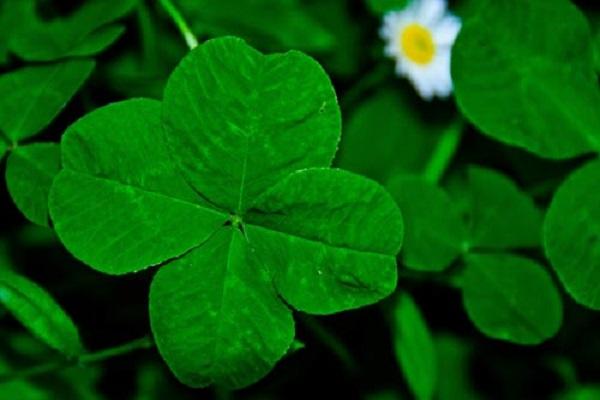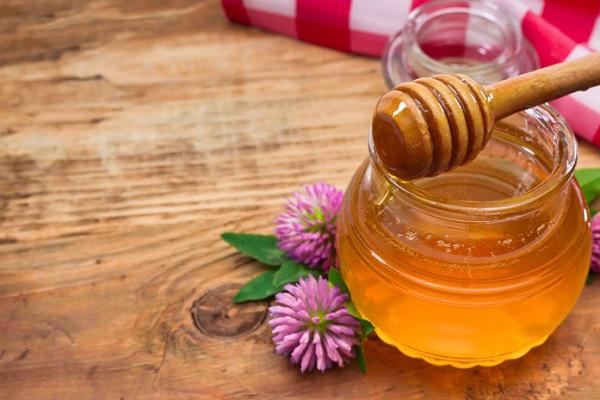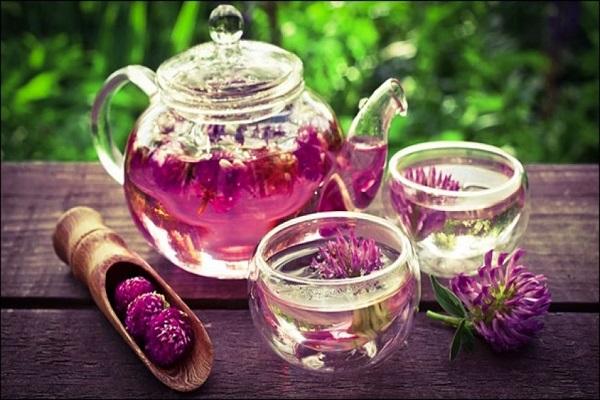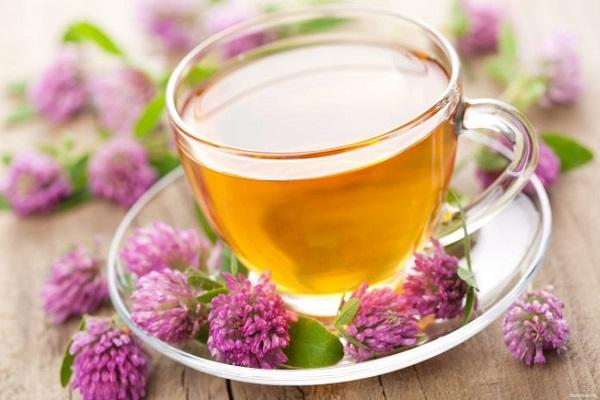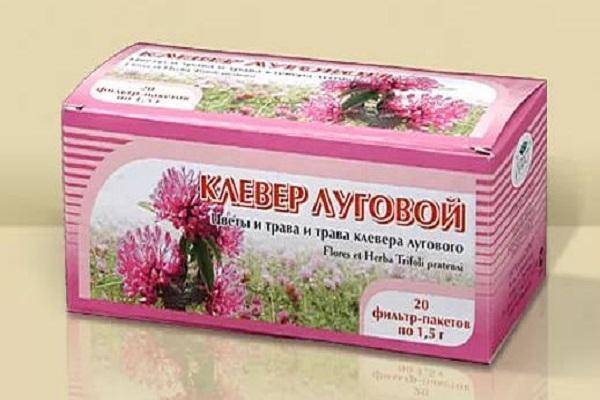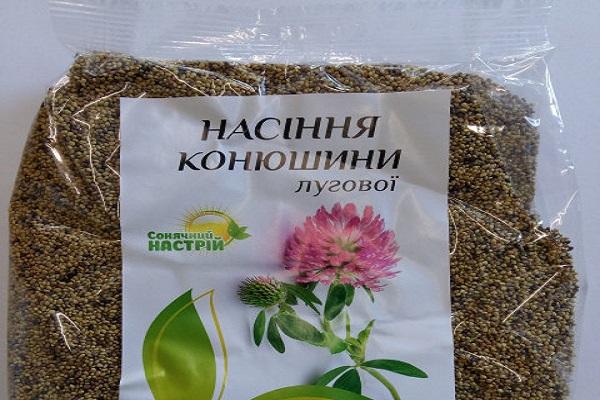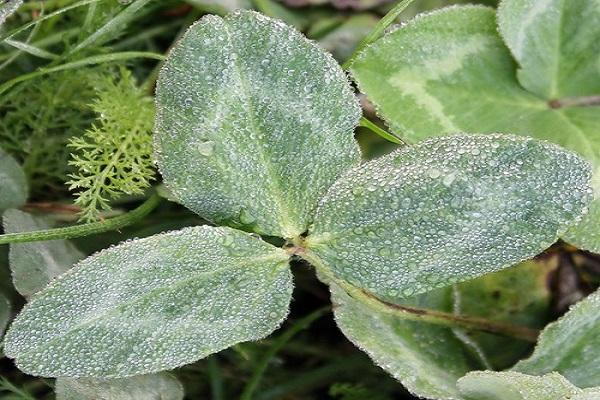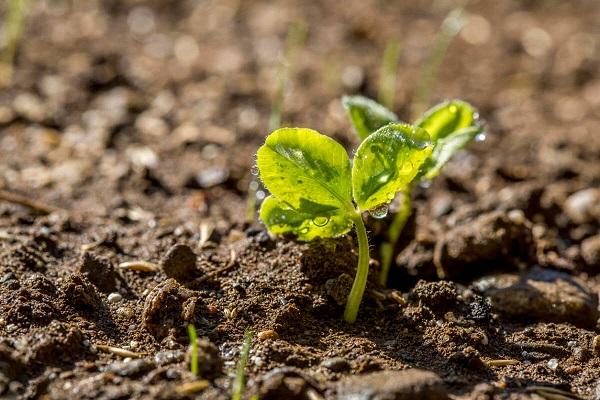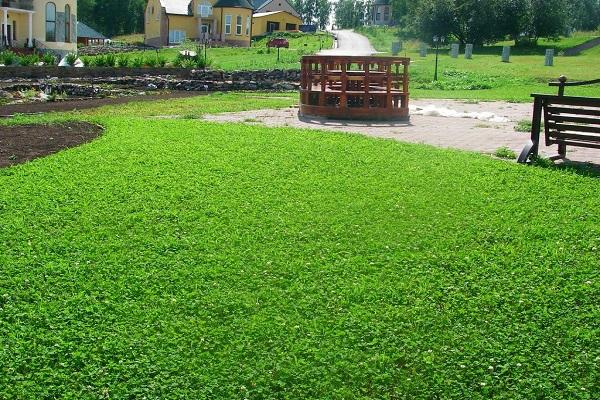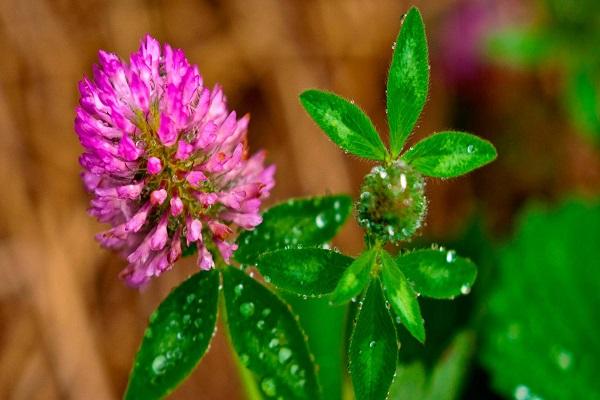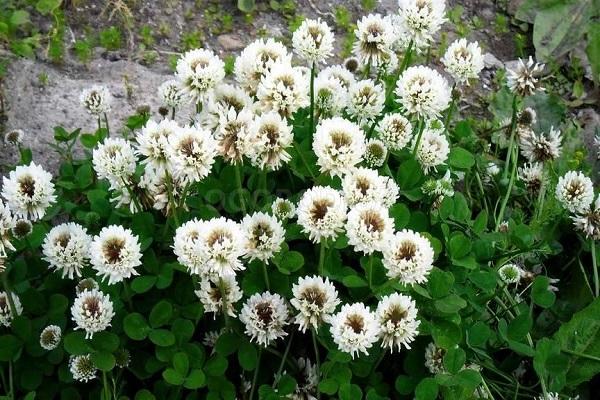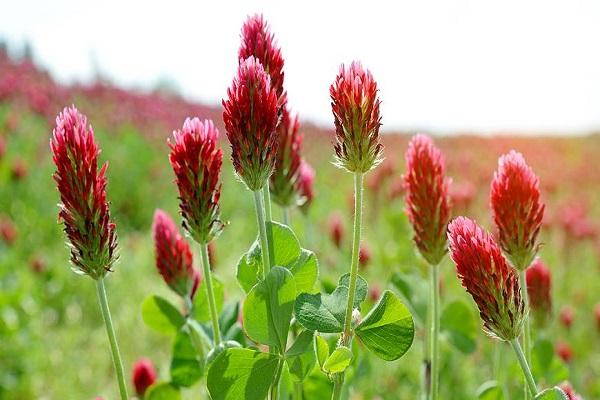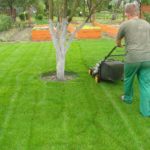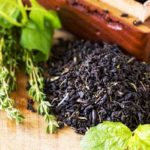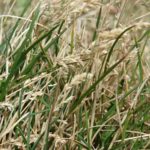Clover is found everywhere on the planet. It does not grow only in Antarctica. The crop is better known as fodder. But there are some types of decorative clover. Planting clover and simple care will allow you to arrange the area around the house, creating a green lawn in a classic style. A clearing of tens of thousands of emerald green leaves and ball flowers looks elegant and natural.
- Description
- Beneficial features
- Types and varieties
- Lugovoy (red)
- Creeping (white)
- Dark Dancer
- Dragon's Blood
- Green Ice
- Rivendell
- Klondike
- Silvester
- Pipolina
- Ronny
- Volat
- Dukhmyany
- Sorcerer
- Nanook
- swollen
- Alpine
- Arable
- cup-bearing
- Multileaf
- Mountain
- Burdock
- Hybrid (pink)
- four leaf
- Egyptian
- Golden
- Application
- Medicinal properties
- Clover honey
- Contraindications
- ethnoscience
- Fodder crop
- Cooking
- Landscape design
- Grass for lawn
- Growing
- Soil preparation
- Sowing dates
- in spring
- in autumn
- Before winter
- How to plant
- Weeding and loosening
- Watering
- Top dressing
- Diseases and pests
- Neighbours
- Aeration
- Lawn mowing
- Lawn cover
- Collection and storage
- Answers on questions
- Reviews
Description
Plant from the legume family: annual and perennial:
- Clover grows up to half a meter. Ball flowers are white, red, with many shades.
- Leaves of three blades are extremely rare 4. It is not for nothing that the translation from Latin means trefoil (trifolium). Popular wisdom says that finding a four-leaf clover brings good luck. When it’s dark, the leaves “sleep” and stretch upward, lining up lengthwise. With the onset of dawn, they bloom.
- The roots are strong and sometimes become woody.
- Clover is pollinated by bees and bumblebees. After flowering, a bean is formed containing no more than two seeds (yellow or purple).
- Special bacteria living on clover roots feed the soil with useful minerals, such as nitrogen.
Previously, Russian people called the plant kashka. And for good reason. There was so much nectar in the flowers that it flowed down the stem. Clover is one of the valuable forage crops, nutritious for livestock. It does not rot in the hay and grows quickly after mowing.
At first the plant grows slowly. Fully develops by the age of two.
Beneficial features
Trefoil is endowed with medicinal properties, which is why it is widely used in traditional medicine:
- as a diuretic;
- anti-inflammatory;
- choleretic;
- antiseptic;
- expectorant;
- hemostatic.
Many other diseases were treated with the plant: decoctions, tinctures, lotions.Clover lotions help against wounds, burns, and skin diseases.
Decoctions and tinctures treat inflammation in the body, cleanse the blood, relieve swelling, headaches, remove unnecessary fluid.
Delicious and medicinal clover honey. It is aromatic and has a pleasant taste. Thrifty housewives season soup with seasoning made from dried flowers, and cut stems and leaves into vegetable salads, since they are rich in essential oils and vitamins.
Types and varieties
Three hundred species of clover are known. More than 75 varieties grow in the area of the former Soviet Union. In Russia, the plant is grown as a fodder crop for the needs of livestock breeding and agriculture. After threshing the seeds, greens remained - an excellent fertilizer.
In addition to forage clover, exotic species are planted for crop production needs. Red (meadow) and white (creeping) clovers are the most common plant varieties. They differ only in color.
Lugovoy (red)
Clover is biennial or perennial, the height of which is from 20 to 60 cm. On spreading shoots there are fragile three-lamellar leaves, spotted white. Flowering occurs at the end of spring, beginning of summer. Globular inflorescences are red, white, variegated.
The protein in clover is no less than in alfalfa, so meadow clover is no less nutritious. Animal feed is prepared from it.
Winter and spring clover have been grown in Russia for more than two hundred years. The most popular Russian varieties:
- Vyatsky;
- Moscow;
- Yaroslavsky;
- Chernigovsky;
- Pskovsky;
- Central Russian.
Meadow clover is found on forest edges, lawns, and clearings.
Creeping (white)
Perennial herbaceous plant, half a meter high. Creeping shoots take root in internodes. The leaves have three blades on petioles and are elliptical in shape, whitish at the base. It blooms with small flowers: white, pink, light green.
Clover blooms in May, flowering lasts until the onset of frost. The variety is long-lived (at least 10 years) compared to other species. Viable, able to quickly recover from trampling. It is not inferior in calorie content to other green foods. A wonderful honey plant.
To create a natural green lawn, gardeners often choose creeping clover.
Breeders have discovered new attractive types of trefoil suitable for creating decorative lawns.
Dark Dancer
The literal translation is “Dark Dancer.” Exotic look. Bright, elegant. The plant is no higher than 25 cm. White flowers among purple leaves edged with greenery. It will take its rightful place in a flowerbed, in a flowerpot.
The species is unpretentious, winter-hardy. Grows in sunny and shaded areas. They don't cut his hair.
Dragon's Blood
A low plant, less than half a meter. “Dragon's Blood” is the literal translation of the title. On creeping stems there are three-lobed leaves, dark green at the base. There are cherry-colored streaks running down the center. The plant is beautiful. Decorate a lawn, flower bed, flowerpot. Clover quickly spreads throughout the area.
Blooms in summer with white flowers. The variety is undemanding to soil. Frost-resistant. Grown to create landscape compositions.
Green Ice
The plant has special leaves: one half is light, almost white, the other is emerald green. The flowers are white. Beautiful decorative look. Unpretentious to cultivation and care.
Rivendell
The plant is low, with small leaves, resilient. Does not require haircuts. Grown to decorate lawns. Demanding of fertile soil, grows well in peat bogs. It grows in shaded places for a long time, for 10 years or more. The species is drought-resistant.
Klondike
A Danish variety of upright-growing trefoil with large leaves, which is why it is planted with large herbs. The species is early, viable, and overwinters well. It often grows mixed with other types of grass.
Silvester
The plant is very hardy. Early variety. Grown with tall herbs for livestock feed. It grows due to numerous shoots.
Pipolina
Due to its low growth (no more than 5 cm), the grass is called microclover. It stays green all year round. Grows back quickly after mowing. Viable, drought-resistant. Even in extreme heat, a lawn seeded with microclover looks fresh. After low mowing, due to the dense structure of the rhizomes, the voids quickly become overgrown.
Ronny
A low-growing type of white creeping clover with small leaves. Tolerates harsh winter climates well. Resistant to diseases. They are grown both for landscape design and for livestock feed.
Volat
The variety was bred by Belarusian breeders. The plant is tall, the leaves are large, the stems are soft and juicy. Grown for livestock feed. Grows back quickly after mowing.
Dukhmyany
Large grass with medium sized leaves. The variety was created by breeders from Belarus for the purpose of growing livestock feed.
Sorcerer
The variety is medium-sized. Caloric for animals. Grown on grazing pastures. It grows back quickly after mowing, which is why clover is harvested for the winter for livestock.
Nanook
Grow as lawn grass. The plant is no higher than 15 cm. It looks elegant with a thick carpet of white and purple flowers. The variety is viable, undemanding to soil.
swollen
Perennial herb 25 cm high. Pink flowers are spherical. Stipules are elongated, ovate-lanceolate. It grows in the steppe, in the foothills. The leaves are attached to the stem by petioles.
Alpine
A half-meter plant with long roots sitting deep in the ground. The stipules of alpine clover-shrub are large. The leaf consists of three leaves. The flowers are small, pink-violet. Clover blooms in mid-summer. Grows on dry, fertile soil.
Arable
The popular name of the variety is “seals”. The bush is fluffy and shaggy. A plant with a straight thin stem. The leaves are trifoliate, elongated, with fine teeth. Pale pink flowers are oblong or round. Blooms in mid-July. Grows on sandy soils.
cup-bearing
Half-meter plant, common. Leaves of three ellipse-shaped petals sit on long petioles. The heads of pale pink inflorescences are located on stalks.
Multileaf
Perennial grass. Flowering stems are located on the main root. The apical inflorescence looks like an umbrella. The purple flowers are large. Blooms in mid-summer.
Mountain
Plant growth is from 20 to 60 cm. It has a developed main root. Stipules are ovate, leathery. The elliptical leaves are located on petioles. There are usually two flowers on a stem. Clover grows in the mountains. In Turkey, Kazakhstan, Georgia and other countries. The plant is used in the treatment of diseases.
Burdock
The grass is short, about 40 cm. The plant is branched. Leaf petioles in stiff hairs. Lower stipules with pointed ends. Clover blooms in spring, in May.
Hybrid (pink)
The plant is perennial. Grows in the European part, Asia, and northern Africa. The grass is tall, the stems are no lower than 80 cm. The petioles have trifoliate leaves. The inflorescences are white and pink, spherical in shape. Used for livestock feed. The leaves sit firmly on the petioles, do not fall off when harvested for the winter, and the hay is softer.
four leaf
A plant with four-leaf leaves. There are several varieties of four-leaf clover.
| Quadrifolium | Purpurascens Quadrifolium | Good Luck |
| The grass has green leaves with dark crimson stripes | Bright purple leaves edged with a green stripe | The leaves are bright, green, shiny, with dark shadows in the middle |
Egyptian
The plant is called Alexandrian or Bersim. The height of the stems is at least 75 cm. The oblong stipules are leathery with sparse hairs. The petioles on the upper leaves are longer than on the lower ones. The flowers are pale yellow. The plant is characterized by early death of leaves. The fruits contain one seed. It is used as green manure and livestock feed.
Golden
It is sometimes called rustling. The annual grass grows up to 40 cm. Flowering continues all summer with amazing yellow flowers. After a while they turn brown. Natural paint is made from the plant and used in treatment. Flowers are excellent honey plants.
Application
Due to its rich chemical composition and healing properties, clover is used in folk medicine, the cosmetology industry, and cooking.
Medicinal properties
Clover honey is a powerful medicine against many diseases.
Prepared from flowers:
- infusions;
- medicinal tea;
- decoctions.
Grass flowers and leaves contain:
- B vitamins, as well as E, C, K;
- minerals: potassium, phosphorus, selenium, calcium, iron;
- essential oils;
- phytoestrogens;
- flavonoids;
- salicylic and other organic acids.
Clover is an antiseptic, antiviral, diuretic, choleretic. Lowers blood sugar and cholesterol, calms the nervous system, fights fungus, cures women's diseases, cleanses the blood, lymph, and removes toxic substances from the body.
Clover honey
Bees extract nectar from the flowers of the plant. This is clover honey. It cannot be without admixtures of other herbs.Since it is impossible for bees to tell which plants to land on, where - they cannot.
Clover honey is light with an amber tint and a floral aroma. If nectar is collected from red flowers, the product turns yellow-pink. Honey is sweet and not bitter. When fresh, the product is not liquid, but flows easily and thickens over time (over several weeks).
Used to treat sore throat, inflammation, cough, and colds. Restores immunity, calms nerves. Clover honey is especially beneficial for the female body; it is not without reason that it is called ladies' honey. Helps preserve women's youth and beauty.
Contraindications
There are restrictions on the use of clover preparations. Do not use in certain conditions:
- pregnant women;
- at low blood pressure;
- with rapid blood clotting;
- oncological diseases of the female organs.
If a person has suffered a heart attack or stroke, they are not treated with drugs containing clover. Before using clover, you should consult a doctor..
ethnoscience
In the field of traditional medicine, clover is widely used. Products prepared from the plant are used both for the treatment and prevention of diseases:
- Tea brewed with clover improves immunity, relieves insomnia, and relieves nervousness.
- Clover honey treats colds. It is also used instead of sugar because it is not as high in calories.
- Flower tinctures help with high blood pressure and headaches. Tinctures are prepared with both water and vodka.
- Decoctions reduce sugar and cholesterol. They treat colds.
- Clover ointments help with skin diseases, heal wounds and burns.
Fodder crop
Clover contains a lot of protein and is therefore nutritious. It contains all the necessary elements needed for winter feeding of cattle.
Varieties bred specifically for livestock feed are planted on pastures for grazing animals and for harvesting grass for the winter. Thanks to the nutritional value of clover, even in dry form, milk yield does not decrease in winter, and animals do not get sick.
Cooking
Due to its beneficial properties and composition, the plant is added to culinary dishes. Clover is made from:
- drinks, tea;
- dressing for first hot dishes;
- salads;
- side dishes;
- cabbage soup;
- casseroles with vegetables.
Landscape design
Trefoils are used to decorate local areas and garden plots, and to create landscape designs: alpine slides, colorful rocky gardens (rockeries). Red clover varieties are suitable for these purposes. Breeders have bred several species. Designers use many varieties of plants to realize their designs.
Grass for lawn
Lawns are decorated mainly with creeping clover, a perennial with white flowers. They plant low-growing, dense, unpretentious varieties that quickly rise after mowing or trampling. Clover lawns decorate the area and give it an elegant, well-groomed appearance.
Growing
In natural conditions, trefoil grows without care; no one weeds it, loosens it, or feeds it. But it is impossible to grow a beautiful green lawn without human participation. Separate rules for planting clover will still have to be taken into account.
Soil preparation
First choose a place: sunny or shaded. Depending on the plant variety: some like a lot of sun, others like shade. They dig up the ground deeply, remove weeds, and level the area for planting.
Sowing dates
Clover is planted in both spring and autumn. To sow 1m2 area, you will need a little more than three hundred seeds. You can buy them in the store. You can prepare seed material yourself, manually.
in spring
The plant is sown at the end of April, beginning of May.It depends on the region and the average daily air temperature. The main thing is to wait until the soil warms up. If you sow seeds in cold soil, they will not sprout, lie in the ground for a long time and rot. And if shoots appear, they will be rare.
in autumn
When sowing in autumn, seeds take longer to germinate than in spring. It is necessary to calculate the sowing time so that the young seedlings grow at least 10 cm before the onset of frost.
Before winter
To improve the soil on the site, it is better to plant clover before winter. It will enrich the earth with nitrogen. Long roots go deep into the ground, making access to air and moisture easier. To fertilize, the grass is mowed until the stems become coarse.
How to plant
To ensure uniform planting, the seeds are mixed with sand in a large container (for example, a garden cart):
- Scattered on the site.
- Sprinkle the top with a thin (no more than 1 cm) layer of earth and turf.
- The plantings need to be watered. But not from a hose with strong pressure, but with a fine spray nozzle.
- During the first 10 days after sowing, the area should be moist. After 2 weeks, young shoots will appear.
Weeding and loosening
If the area sown with trefoil is small, then you can weed the plant manually when there are a lot of weeds. In large areas, the seeds of the plant are mixed with cereals. They will crowd out all weeds. During the growth period of clover, the cereals are cut down.
Watering
For trefoil growth and lush flowering, watering is necessary. Water it no more than once a week to keep the lawn looking fresh.
The plant does not like waterlogged soil, although it also does not like long droughts, with the exception of certain varieties..
If the spaces between trees and lawns are planted with shamrocks, the plant is not irrigated at all; rain is enough for it.It is convenient to equip drip irrigation, especially for a well-groomed lawn.
Top dressing
The grass does not need fertilizing. But it won't be harmful. When digging up the soil, you can add organic matter (manure, peat, humus). If you don’t like the way the trefoil blooms, you want more lush, long-lasting flowering, the plant is fed with minerals: phosphorus, potassium. Ash is suitable as a folk remedy.
Diseases and pests
Many shamrock varieties require pruning. Otherwise, the grass will thicken and there will be snails and slugs in it due to the high humidity. Thickening can lead to rotting and fungal infections. Preventive grass cutting will help you avoid trouble.
Neighbours
Timothy grass will be a good neighbor of the shamrock. It does not oppress clover, so it will keep it in good company. Meadow fescue will also coexist peacefully with trefoil.
Aeration
Owners of lawns with trefoil need to aerate 1-2 times per season to keep the lawn looking well-groomed, neat and fresh. An aerator loosens the soil, providing better access of air and moisture to the roots. He combs the lawn grass, pulling out moss and weeds.
Lawn mowing
Some gardeners believe that autumn pruning is not necessary, since fallen leaves will warm the shamrock in frosty weather and prevent it from freezing. Experienced gardeners say that the leaves must be removed and the lawn mowed:
- If you do not trim, the dead stems under the snow will attract rodents and harmful insects.
- The new roots of young plants will not have time to prepare for the cold.
Cut the grass at least 15 days before frost. Before cutting, foliage and debris are removed.
Lawn cover
Whether or not to cover a lawn depends on the climate in the region.If winters are harsh and frosts are severe, then it is advisable to cover them.
If the lawn is properly prepared for winter, it will not be afraid of the cold. Experienced gardeners share their experiences:
- The snow is not removed, the paths are cleared.
- It is advisable not to walk on the lawn.
- Due to thaws, an ice crust sometimes forms. It is broken to provide air access.
If you follow the advice of gardeners, the shamrock will not freeze.
Collection and storage
During the flowering period, inflorescences are collected by hand or cut with a knife. Place in baskets without pressing. Dry outdoors in a shaded place. An electric dryer is used for drying, but the temperature should not exceed 75 °C. The herb must not be allowed to dry out, otherwise it will not be healing. Flowers are stored for no more than two years. The roots of the plant are dried in the same way.
Answers on questions
The question often arises about at what time to aerate the lawn. Gardeners say that it is advisable to carry it out in late spring. After the first shoots, you will see what the lawn looks like: voids and thickening. The place where aeration is needed will immediately become noticeable.
One of the frequently asked questions is: “What type of clover should I plant on my lawn?”
Gardeners advise choosing white creeping trefoil. He has many species that are low-growing and hardy. There are even some who don't cut their hair.
Reviews
Gardeners who have lawns with shamrocks say that “porridge” is better than special lawn grass, which is expensive and requires a lot of care.
Alexander: “The lawn with white creeping clover is “indestructible.” You can drive a car on it, you don’t have to mow it.”
Some gardeners like that clover gets rid of dandelions. But at the same time they warn that you need to be careful when walking barefoot on the lawn, since the shamrock attracts bees like a magnet.
And if you come across a sheet with four plates, happiness and good luck await you.

